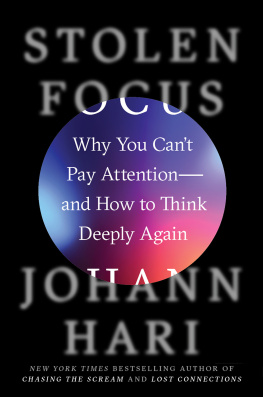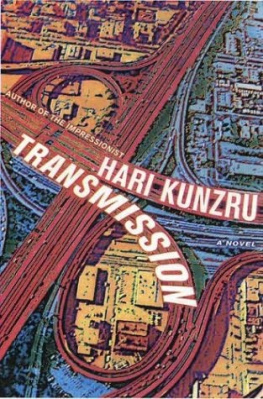Femme Fatale
LOVE, LIES, AND THE
UNKNOWN LIFE OF
MATA HARI
Pat Shipman

To Alan
Contents
Mata Hari first came to my immediate attention because of a newspaper article in 2000. At that time, the Institute of Anatomy museum in Paris announced that the head of Mata Hariin the museums collections since her death in 1917was missing. A curator speculated that the head might have been stolen by an admirer in the 1950s, the last time the collection had been moved. This seemed to me an extraordinary suggestion bordering on the fantastic. The thought of an aging admirer stealing a womans head thirty years after her death was both ludicrous and macabre. I soon came to realize that, for Mata Hari, many unbelievable things were possible.
As I investigated the books about and documentary evidence of her life, I felt that previous biographers had neglected her married years in the Dutch East Indies. Because I had researched the colonial period in Indonesia extensively for another book, The Man Who Found the Missing Link, I was convinced that the roots of the later, better-known part of her life lay in her years in the Indies. This approach has led me to a new understanding and some important discoveries.
I have used terms popular in the later 1800s and early 1900s for the racial and social classes of people in the Dutch East Indies. Some of these are now offensive or derisory. I wish to make clear that I do not use them because I wish to impugn the people to which they refer but simply as a matter of historical accuracy.
I have relied heavily on available correspondence to or from Mata Hari. Letters are often irregularly punctuated, with dashes and underlinings used instead of more conventional punctuation. In quoting these, I have inserted more modern punctuation and used italics instead of underlinings for emphasis, but otherwise the words stand as written. Because I am writing for English-speaking readers, I give the names of all publications in English in the text. The full references in the original language can be found in the notes.
Translation has been a major issue in researching and writing this book. Translations from the French are my own, with the able assistance of Marc Godinot and Catherine Helgeson. Translations from the Dutch have been done either by my remarkable colleague and research assistant, Dr. Paul Storm, or by myself with assistance from Chiara Bols and Ida Int Veldt. I am very grateful for such friends. In this book as in previous work we have done together, Paul Storm has demonstrated his invaluable ability to discover long-lost or-overlooked information. I cannot thank him enough for his inspired efforts.
Nonetheless, I am solely responsible for any errors in translation.
I wish to express my gratitude to the curators, scholars, and institutions that have kindly provided access, assistance, or information, and I apologize if I have overlooked any. Thanks to librarian Mrs. M. Gaspar-Raven of the Museum Bronbeek; Gerk Koopmans and Evert Kramer of the Fries Museum in Leeuwarden; Michiel van Halem of the Gemeente Archief, Leiden; and the Haanstraschool in Leiden. I am grateful for the invaluable assistance of Philippe Fernandez in obtaining permissions from France. My appreciation also goes to the Algemeen Rijksarchief, the Centraal Bureau voor Genealogie, the Nationaal Archief, and the Stichting Indische Familie Archief, all in The Hague; Gina Houwer at the Tropeninstituut in Amsterdam; Liesbeth Ouwehand of the KITLV, which housed a photograph of Mata Hari that is, to my knowledge, previously unpublished; the Legermuseum and its excellent library in Delft; the Public Record Office at Kew; Emmanuel Penicaut of the Service Historique de lArme de la Terre at Vincennes; Tristan Boos; Glenn Bruce; Tineke Hellwig; Christine Ruggere of the Institute of the History of Medicine, Johns Hopkins University School of Medicine; Ann Laura Stoller; and Julie Wheelwright.
As always, my closest friends and family have offered me a great deal of support and encouragement, without which I can never write. You know who you are. Thank you.
The most important thing to know about Margaretha Zelle is that she loved men. The most crucial thing to know about her is that she did not love truth. When it was convenient, she told the truth. When it was not, or when she found the truth tedious, she invented what might be kindly called alternative truthsand unkindly, lies. For her, what was factually true never seemed as essential as what should have been true. By the time she had transformed herself into Mata Hari, she was highly skilled at fashioning the world to her liking.
She was a creation from beginning to end, a character in a play that she continuously rescripted. She changed her name as often as some women change hairstyles.
Only once in her life did she acknowledge this fact about herself, and it was when she was in prison, in imminent danger of being convicted of espionage and sentenced to death. The severe conditions of her imprisonment, the catastrophic collapse of the world she had created, and the brutal destruction of her identity had driven her very near to madness. With painful insight sharpened by her teetering on the edge of the abyss, she wrote to the man who was her captor, accuser, and interrogator, trying to explain:
There is something which I wish you to take into consideration, it is that Mata Hari and Madame Zelle MacLeod are two completely different women.
Today, because of the war, I am obliged to live under and to sign the name of Zelle, but this woman is unknown to the public.
I consider myself to be Mata Hari. For 12 years, I have lived under this name. I am known in all the countries and I have connections everywhere.
That which is permitted to Mata Haridanceris certainly not permitted to Madame Zelle MacLeod.
That which happens to Mata Hari, they are the events which do not happen to Madame Zelle. The people who address one do not address the other.
This was probably the moment of her greatest self-understanding.
In this telling of her life I have steered as close to the truth as I am ablebut in her case, the truth is an ever-shifting and elusive wind.
H E TAUGHT HER to think of herself as special. She was his little princess and he loved to show her off. He bought her wonderful dresses in vivid, flamboyant colorsonce a dress of scarlet velvet that she wore to school. She twirled to show her father how the skirt flared out, and he beamed and told her she was beautiful. She did the same for her friends at Miss Buyss exclusive school, and they looked at her with wide eyes. They pretended to be shocked, to think it was a scandalous dress for a girl her age, but she knew they were only jealous. They were better suited to the subdued colors they habitually wore. They could have afforded a dress like hers easily, but they never could have worn such a garment with her flair. Their pallid skin and colorless hair and lack of personality condemned them. Only someone like her, with thick, darkly waving hair, compelling eyes, and caf au lait skinonly someone whose very essence cried Look at me!could get away with it.
One of her school friends in a moment of genius called her an orchid in a field of dandelions, and she was, even then. And she knew it. She knew it because she was different from everyone else. She knew it most of all because of the way her father treated her, as if she were infinitely precious. His love gave her a wonderful feeling.
She was born on August 7, 1876. Her younger brother, Johannes, was born two years after her, on November 26, 1878. Then in 1881, on September 9, came twin boys, Arie and Cornelius. The birth of her brothers never displaced Margaretha from her place in their fathers affection; she was always the favored child in his eyes. She probably believed he loved her more than he loved her mother.













